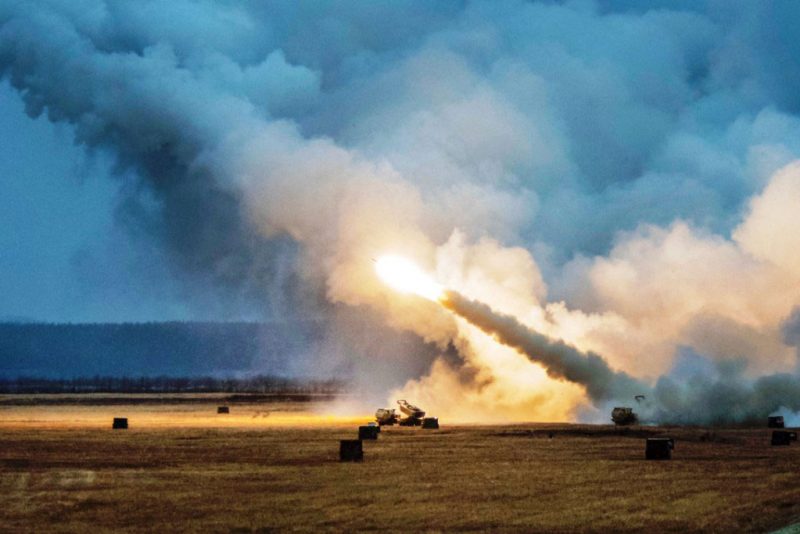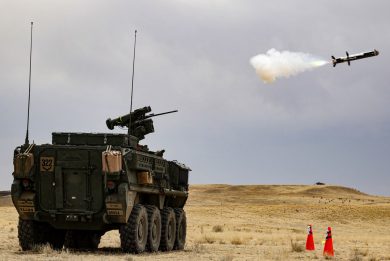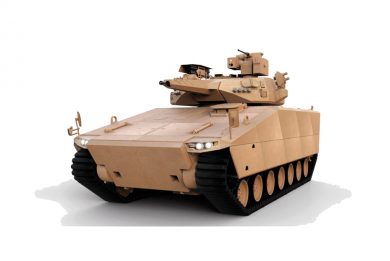US Army: delivering Long-Range Precision Fires
The Defence iQ Future Artillery Conference kick-off was dedicated to the new role the artillery is taking in an A2/AD saturated battlefield, and on how what is probably the most high-tech Army is preparing the future of its indirect fire capability.
It was up to Brig.Gen. John Rafferty, Director, Long Range Precision Fires (LRPF) Cross Functional Team (CFT), US Army, to open the 2020 edition of the Future Artillery Conference, to update the audience on his services plans. The LRPF CFT is part of the US Army Futures Command (AFC). “The AFC represents one of the major reorganisations since the 1970s,” Brig.Gen. Rafferty explains, underlining that the new command, which is just over two-years old, was formed based on two issues, the pacing threat the Army has to prepare for, and the fact that the modernisation approach was optimised for an industrial age and was not going to meet the demands of the future, so a change in the modernisation approach was needed to fight and win in the information age. “The fundamental question that I remember being asked by the Army senior leaders when this modernisation reorganisation was kicked around was, ‘Who is in charge of modernisation?’, and a couple of hands will go up,” Rafferty remembers. As one of the fundamentals of leadership is unity of command, this meant that there was no unity of command for modernisation. “This shows the rationale that stays behind the creation of the AFC, of which General John Murray is the first four-star commander,” he concludes
“The A2/AD threat is real and this proliferation of sophisticated, integrated air defence systems and long range artillery of all types presents challenges from the strategic level down to the tactical level,” he says adding that at the strategic level this will deny access to an operating area, while at the tactical level it will separate forces in echelons, preventing them from fighting as a combined arms team, which is the essence of the US Army. To counter those threats the US developed an emerging operating concept, known as Multi-Domain operations, that will allow US forces to get access to the operating area, fight as a combined arms team and eliminate the layered enemy stand-off. “In the kinetic field, the best way to do that is with long range surface-to-surface fires, so the LRPF emerged as the number one modernisation priority, Rafferty says.
CFTs came out a little bit ahead of the AFC and were designed to provide that unity of command. I will tell you a bit about our team. “The LRPF CFT has a mix of around 25 military and civilian here at Ft. Sill Oklahoma, it is much bigger than that. It extends across the installation here at Ft. Sill where my two important team mates here are Maj.Gen. Ken Kamper, the commander of the Fires Centre of Excellence, and Brig.Gen Winston “Phil” Brooks who is the Field Artillery Commandant. I am responsible for the “M” domain of the DOTMLPF-P (Doctrine, Organization, Training, Materiel, Leadership and education, Personnel, Facilities and Policy) and they are responsible for the organisation, the leader development, the training, the doctrine, so we have to work together to deliver these capabilities,” the CFT director says. Across the United States his team has personnel at the Detroit Arsenal, home of the Ground Vehicles Systems Center and Programme Manager for SP howitzers, at the Picatinny Arsenal, where the Programme Manager for Combat Ammunition Systems and the Laboratory that supports that, the Armament Center, are located, down to the Redstone Arsenal to the Aviation and Missile Center and the Programme Manager for Rockets And Missiles. Time is a key element, in order avoiding lengthy development processes that might lead to field outdated systems. “Our team starts with laboratories and goes up all the way to the acquisition side. Our responsibility is thus to lead this modernisation enterprise, to compress the activities, and to eliminate what used to be the practice of hands-off from one community to another, and to have one team responsible for this from start to finish, compressing the process into simultaneous activities, saving a lot of time,” Rafferty explains.
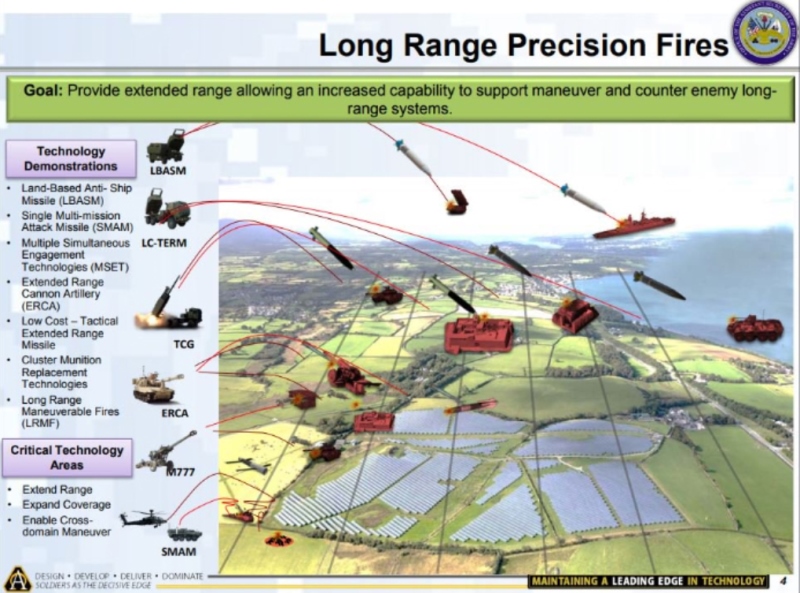
Further detailing the process, Rafferty highlights the three-prong solution adopted: “The first prong is ‘can we do it’, can we meet the tactical milestones that settled on the way, can we deliver this technology and this capability. The second is ‘should we do it’, the combat modelling from our Analysis Centre supporting this capability, helping us understanding if it will make the difference in a near-peer threat scenario. And lastly comes ‘ho will we do it’, so how we will fight with this,” the director points out. One of the fundamentals of the AFC is to provide soldier-centric design systems. “A few weeks ago we took a howitzer section from the 4th Infantry Division out of Fort Carson, Colorado, to the Picatinny Arsenal, New Jersey, to get them in the back of Prototype Zero of our ERCA to make sure that we are configuring the inside right, that we are maximising the number of stowed kills yet not limiting the safety or the ability of the crew to conduct their duties inside,” Rafferty exemplifies. At a higher level, he makes another example: recently the 1st Infantry Division was deployed at the National Training Center (NTC), Fort Irwin, quite a unique fact as usually NTC rotations are at brigade combat team level. “Fewer manoeuvre troops were fielded in the box, but there were a series of Division Command Posts in the force-on-force environment, together with enabling units, such as Divisional Artillery, the Aviation Brigade, Sustainement, and Divisional Cavalry Squadron for reconnaissance. They fought the division fight, mostly simulated, merging live and virtual training, the Division fighting with the General Support artillery cannon battalion, the ERCA battalion, and what we found from that backed up our combat modelling,” the director LRPF CFT says. His team gets the findings from the Combat Modelling, which complemented by what comes from the NTC, from the operational commanders, allows him to make a very strong case when discussing with the Army leaders.
Coming to hardware, Brig.Gen. Rafferty starts from the tactical level. “I already mentioned the ERCA system, an I underline the word system. Its first element is the platform, the improved SP howitzer with the 58-calibre gun tube on it and the upgraded complete armament system. The second is the supercharge propellant that generates the chamber pressure and the muzzle velocity we need. Finally come the improved projectiles, which include Rocket Assisted Projectiles (RAPs), the effort to increase the Excalibur precision munition range, and the course correcting fuse, as we need the accuracy at those extended ranges, as well as high performing energetics providing the required lethality.”
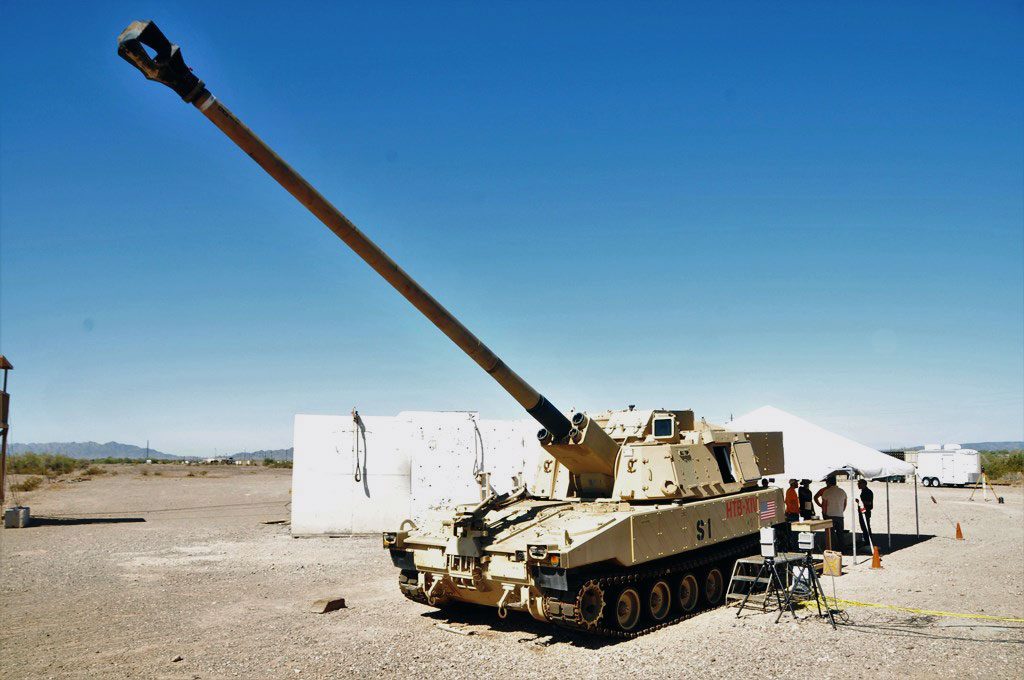
Increasing accuracy means also increasing costs: “I would like to offset this idea of mass versus precision to accuracy versus effect, and talking economics, consider the cost per kill.” Brig.Gen Rafferty confirms that the ERCA is on track for delivery in 2023: “We will get one battalion set, then we will spend a year evaluating the whole operational concept and the concept of sustainment, and we will have the chance to explore how we are going to fight with this new system in a heavy division.” The approach to ERCA as a system has to increase range, improve lethality, and increase the rate of fire. “The latter is being approached with a traditional autoloader, currently under development, and with small-business initiatives to see other ways in which we can improve the rate of fire inside the howitzer. Brig.Gen. Rafferty makes it clear that the ERCA is not replacing the M109A7 PIM (Paladin Integrated Management). “We are introducing General Support cannon 155/58 mm ERCA system that allows us to get that extended range, while the M109A7 PIM, which features an improved chassis, mobility and survivability, will remain the direct support system in our heavy brigade combat teams.”
The second element of the LRPF is the Precision Strike Missile (PrSM), which will replace the ATACMS, and will have a range in excess of 500 km “because we are no longer limited by the INF treaty;” Rafferty remembers, adding that the PrSM is on the good path for delivery in 2023.
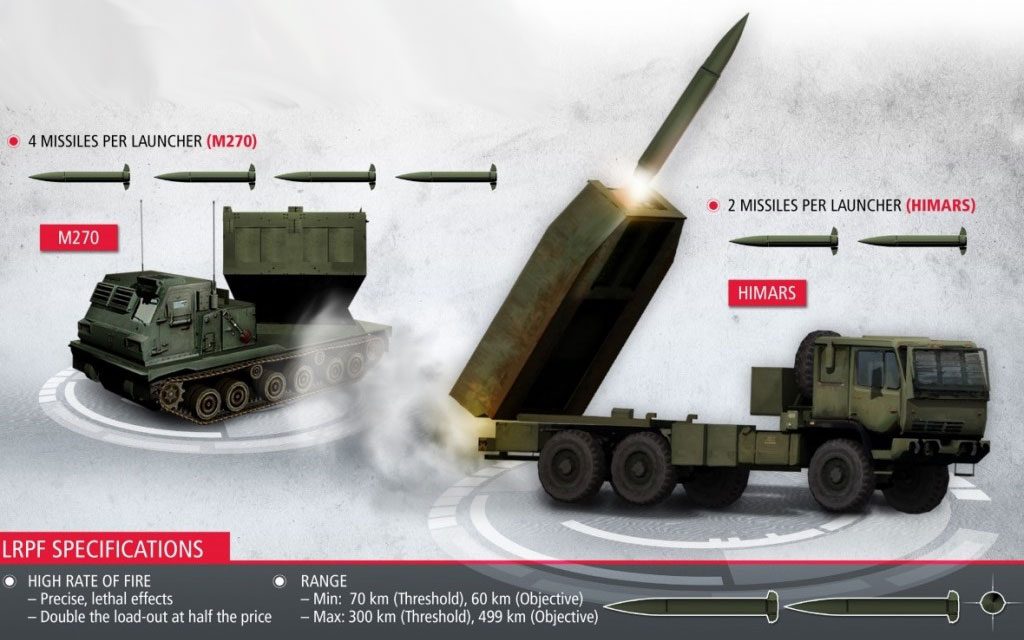
Three successful flight tests were carried out successfully in 2019, and four tests, two involving a single missile and one two of them, are planned for 2021. “We have the opportunity to accelerate the integration of the seeker, and so we are working to get the resources to do so.” The PrSM will feature a multi-mode seeker that will give the US Army the ability to attack maritime targets at those extended ranges.
“Moving to the strategic end of the portfolio, we are in support of the Long Range Hypersonic Weapon (LRHW) which is being developed by Lt.Gen. Neil Thurgood, Director for Hypersonics, Directed Energy, Space and Rapid Acquisition. We at LRPF CFT wrote the abbreviated CDD (Capability Development Document), the requirement document for that, and we are involved in making sure that here at the Fires Centre the doctrine is ready, the organisation is ready, the units are prepared, the soldiers are trained, and all the rest is ready,” Rafferty says, noting that “They are going to deliver the hypersonic battery in 2023, so there is not a moment to lose to be ready for that date.”
According to the Director LRPF CFT this hypersonic system should be complemented by another system that can deliver a volume of more affordable projectiles. “That’s fundamentally the idea behind a very novel approach to deliver in the strategic ranges over 350 km, and that is the Strategic Long Range Cannon (SLRC).”
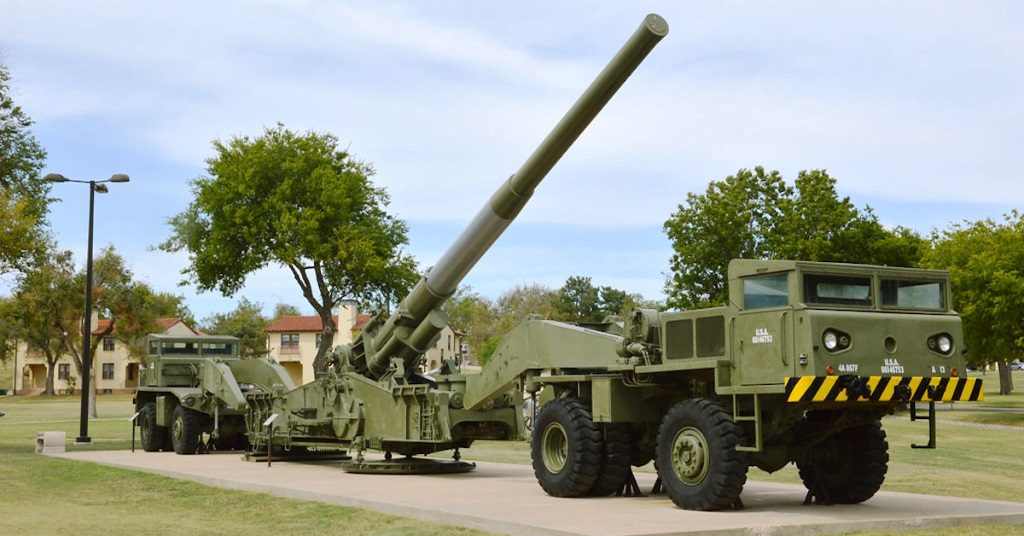
For the time being this remains a Science & Technology effort, aiming at a maximum range demonstration in late 2023. “We don’t know enough yet if we want to turn the SLRC into a system, transition it to a programme manager and turn it into a unit, but we are on path, we met all these ‘can we do it, we are on path, should we do it’ gates, our analysis shows that it would be a survivable system against countermeasures and A2/AD systems in the end game, and we have been doing a lot of tabletop exercises with our theatre commands on how we would fight with this system,” Brig.Gen. Rafferty tells the Defence iQ Future Artillery Conference audience.
However the LRPF basket might further increase. “We recently started to work on a medium range capability, we are not talking that much about the material solution we are pursuing but I think it is an interesting maturity of the portfolio,” Rafferty says adding ,“We created this gap and I find ironic that the PrSM that now can go over 500 km is called a short range system, as it shoots farther than anything we have got now. But that’s were we are going, so between the LRHW capable to attain targets at thousands of kilometres and the SLRC, out to about 1,000 km, we created a mid-range gap so we are looking at ways to it, because we are now thinking more about how we are going to fight at these ranges with surface-to-surface fires and it’s a place we haven’t really been as an Army since the Pershing missile.”
Brig.Gen. Rafferty presentation could not end without mentioning Project Convergence. “That is now the experimentation path for the Army Futures Command. It started a few months ago at Yuma Proving Ground, where we had engineers operators in the dirt, in conditions pretty harsh both for the technology as well as for people, but it really did test our technology and gave us a chance to explore this idea of Convergence, which is kind of fuzzy as part of Multi-Domain operations. We started to bring some clarity to it thanks to a fire support mission we experimented out there: a dedicated space-based RISTA, with artificial intelligence enabled programs to go through data and find targets, generated cause for fire, which was sent quickly to ERCA for extended range engagements against A2/AD targets, autonomous drones then providing Battle Damage Assessment (BDA) and target refinement” he explains, “And all this was done in minutes and seconds, showing the convergence of effects from space, cyberspace, made better by AI, ground and air all together, to attack targets at ranges we couldn’t do before and in time standards that we couldn’t beat before.”
The end-state should be the development of the Joint All-Domain Command and Control (JADC2), the Department of Defense’s concept to connect sensors from of all the military services, Air Force, Army, Marine Corps, Navy, and Space Force, into a single network. “However we would like to dial down that idea of any sensor, any shooter, any command post, into right sensor, best shooter, right command post. That’s were we are going to, convergence is our path to explore and experiment that, first as an Army, then as a Joint Force and finally as a Coalition,” the Director Long Range Precision Fires Cross Functional Team concludes.
Photos and graphics courtesy US Army, US Air Force, Raytheon, Lockheed Martin and A Henderson

